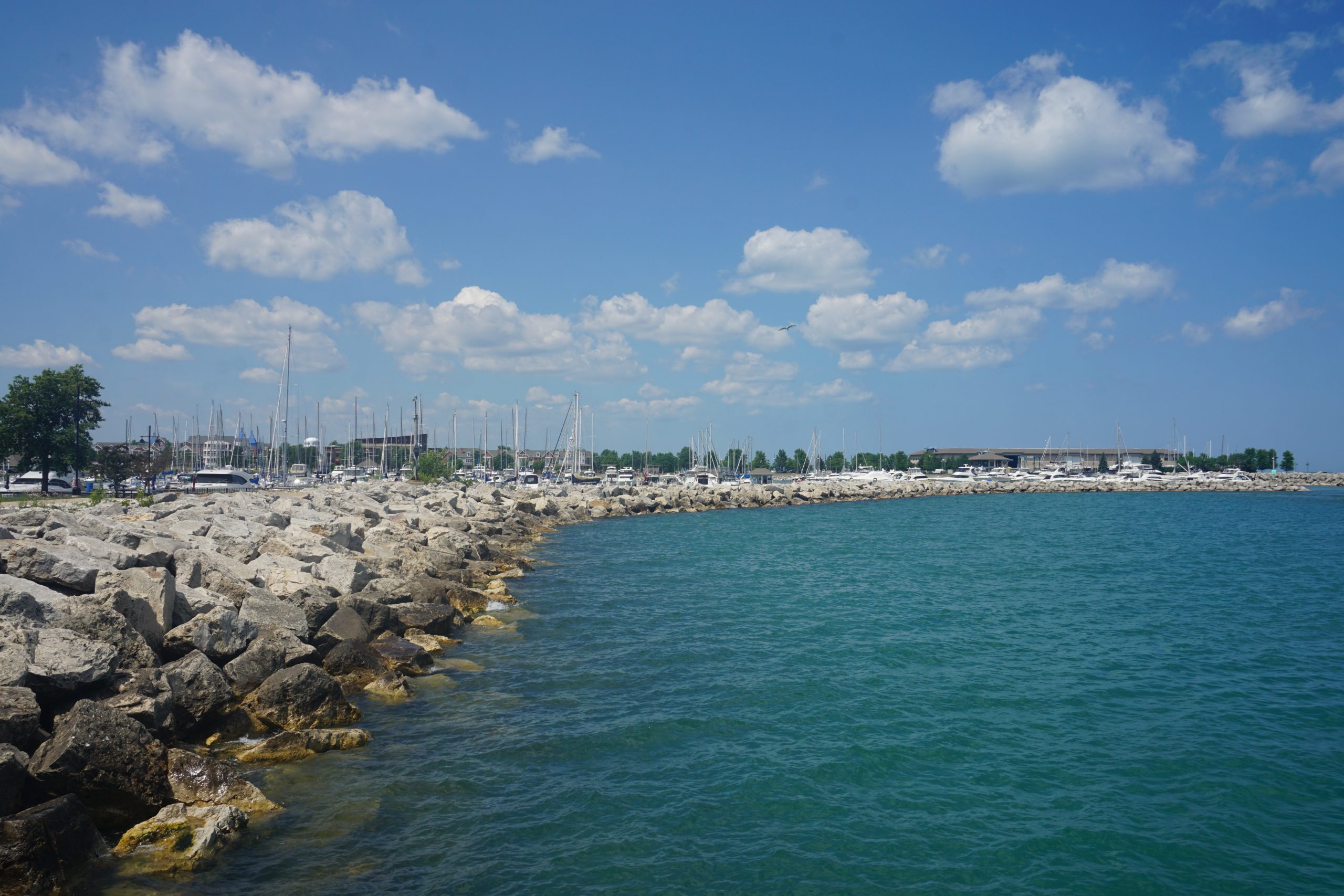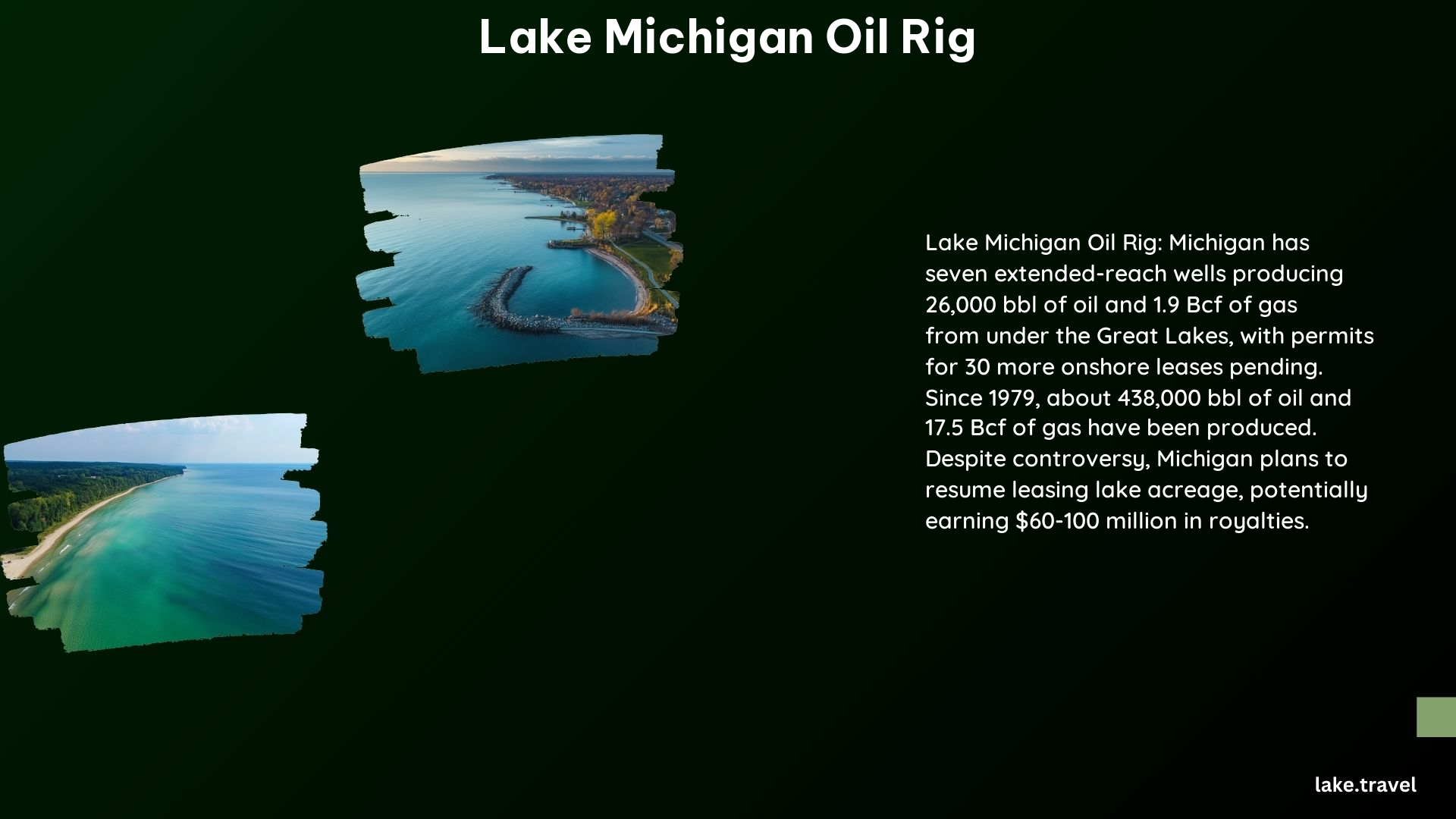The oil rigs on Lake Michigan are a topic of significant interest and debate, particularly among Lakes Touring Enthusiasts. These rigs are primarily used for extracting oil and natural gas from beneath the lake, but their presence raises concerns about the potential environmental impact and the measures in place to ensure safety.
Purpose of the Oil Rigs on Lake Michigan

Michigan has seven extended-reach wells that have produced 26,000 barrels of oil and 1.9 billion cubic feet of gas from under the Great Lakes, with permits for 30 more onshore leases pending. The state plans to make a decision about leasing lake acreage, which could generate between $60 million and $100 million in royalties.
Environmental Impact of the Oil Rigs on Lake Michigan

The environmental impact of the oil rigs on Lake Michigan is a significant concern. Environmentalists argue that drilling for oil and gas beneath the Great Lakes poses a risk to the ecosystem and the drinking water supply for millions of people. A drilling accident could contaminate the water and disrupt the region’s $1 billion tourism industry. However, the Michigan Environmental Science Board has concluded that there is little to no risk of contamination to the Great Lakes bottom or waters from directional drilling.
Safety Measures for the Oil Rigs on Lake Michigan
To mitigate the risks associated with oil drilling on Lake Michigan, several safety measures are in place:
- Directional Drilling: Michigan uses directional drilling, which reduces the risk of contamination to the Great Lakes bottom or waters.
- Permitting and Regulation: The state of Michigan regulates and issues permits for oil drilling, ensuring that drilling operations meet certain safety and environmental standards.
- Monitoring and Inspection: Regular monitoring and inspection of drilling operations help identify and address potential issues before they become major problems.
Additional Details
Water Cribs
Lake Michigan is also home to water cribs, structures built to house and protect offshore water intakes used to supply the City of Chicago with drinking water. These cribs are located close to 200 feet beneath the lake and transport water through tunnels to pumping stations and purification plants.
History of Drilling
Gas drilling has been ongoing on the Canadian side of Lake Erie for over 40 years, with some 550 wells producing natural gas.
Legislative Efforts
There are ongoing legislative efforts to ban drilling for oil or gas beneath the Great Lakes, including a bill introduced by US Rep. Bart Stupak to ban all drilling for oil or gas beneath the Great Lakes.
References
- WTTW News. (2023). How Do Chicago’s Lake Michigan Water Cribs Work? – WTTW News. https://news.wttw.com/2023/09/28/wttw-news-explains-how-do-chicago-s-lake-michigan-water-cribs-work
- Hart Energy. (n.d.). Offshore drilling in the Great Lakes? – Hart Energy. https://www.hartenergy.com/exclusives/offshore-drilling-great-lakes-22898
- Northwestern University Press. (2017). “Wonder of America and of the World”: The Great Chicago Lake Tunnel. https://nupress.northwestern.edu/blog/2017/09/13/wonder-of-america-and-of-the-world-the-great-chicago-lake-tunnel/
- Elkhart Truth. (2024). No problems drilling for Lake Michigan oil | News | elkharttruth.com. https://www.elkharttruth.com/news/no-problems-drilling-for-lake-michigan-oil/article_a813582b-c57f-5b50-91ac-83b3dd319ca3.html
- Wikipedia. (n.d.). Water cribs in Chicago – Wikipedia. https://en.wikipedia.org/wiki/Water_cribs_in_Chicago
